Börja med roller skating? Rätt skridskor gör stor skillnad. Nybörjarvänliga modeller hjälper dig att hålla balansen, vara bekväm och känna kontroll. Quad skates är utmärkta för stabilitet, och du behöver inte spendera mycket - funktioner som fotledsstöd, mindre hjul och vadderade insidor är viktigare än priset. Toppval? Riedell R3 Derby (inomhusfokus, 175 $), Moxi Beach Bunny (redo för utomhus, 119 $) och VNLA Parfait (lättviktig, 159,99 $). Kombinera dina skridskor med skyddsutrustning som hjälm, knäskydd och handledsskydd för att hålla dig säker. Med övning och rätt utrustning kommer du snart att åka skridskor med självförtroende. 😊
du behöver bara 7 minuter för att lära dig åka rullskridskor | rullskridsko 101
Viktiga funktioner att leta efter i nybörjarrullskridskor
Att välja ditt första par rullskridskor kan kännas lite överväldigande, men att fokusera på några viktiga funktioner kan göra processen mycket enklare - och roligare. Rätt skridskor hjälper dig att snabbt bygga självförtroende och göra inlärningen smidigare. Här är vad du ska tänka på.
Stabilitet och balans
Stabilitet är allt när du börjar. Skridskor med låg tyngdpunkt, som de designade av Snowfeet, gör det lättare att hålla balansen och känna sig trygg på hjulen. Mindre hjul är ett utmärkt val för nybörjare eftersom de naturligt sänker din tyngdpunkt, vilket gör balansen mycket enklare. Större hjul kan däremot kännas lite svårare att hantera i början. Mjukare hjul ger bättre grepp, vilket också hjälper med balansen - särskilt om du åker inomhus. Höga skridskor med styva stövlar ger bra fotledsstöd, håller dina fötter stadiga och din hållning i schack. Många artistiska skridskor inkluderar denna typ av högt fotledsstöd, vilket kan vara till stor hjälp för nybörjare.
Bekvämlighet och stöd
Låt oss vara ärliga: om dina skridskor inte är bekväma kommer du inte vilja fortsätta öva. Leta efter skridskor med vadderade insidor, dämpade innersulor och en säker PVC-konstruktion för att hålla dina fötter skyddade och bekväma under långa pass. Justerbar storlek är en annan funktion att hålla utkik efter - det säkerställer en tajt passform utan att klämma för hårt. En välpassande skridsko ger dig det stöd du behöver samtidigt som den tillåter flexibilitet, så att du kan fokusera på att bemästra dina rörelser istället för att oroa dig för ömma fötter.
Lätt att kontrollera
Kontroll är nyckeln när du lär dig, och quad skates är en nybörjares bästa vän. De styrs genom lutning, vilket betyder att du kan ändra riktning bara genom att förflytta din vikt - ett enkelt och intuitivt sätt att lära sig åka skridskor. Justerbara kingpins (bulten som går genom mitten av truckstacken) låter dig finjustera hur responsiva dina skridskor känns. Lösare inställningar gör det lättare att svänga, medan tajtare inställningar ger mer stabilitet. Cylindriska kuddar hjälper också till med mjuka, kontrollerade svängar. Moderna skridskor kommer ofta med stora gummibelagda hjul, som ger bättre grepp och en mjukare åktur jämfört med de gamla metallhjulen. Och glöm inte gummitåstoppen - de är avgörande för att bromsa och skjuta ifrån, vilket ger dig kontroll och självförtroende att fortsätta rulla.
Snowfeet skridskor, inspirerade av skid- och snowboardteknologi, är designade för att ge nybörjare den precision och kontroll som behövs för att snabbt känna sig bekväma på hjul.
Topp rullskridskor för nybörjare
Att hitta rätt par rullskridskor kan göra stor skillnad när du precis börjat. Medan traditionella modeller är fulla av bra funktioner, tar Snowfeet ett nytt grepp med sin skid-inspirerade design, vilket gör det till ett utmärkande alternativ för nybörjare. Men innan du dyker in i avancerade tekniker, låt oss gå igenom tre nybörjarvänliga skridskor som balanserar komfort och prestanda.
Riedell R3 Derby
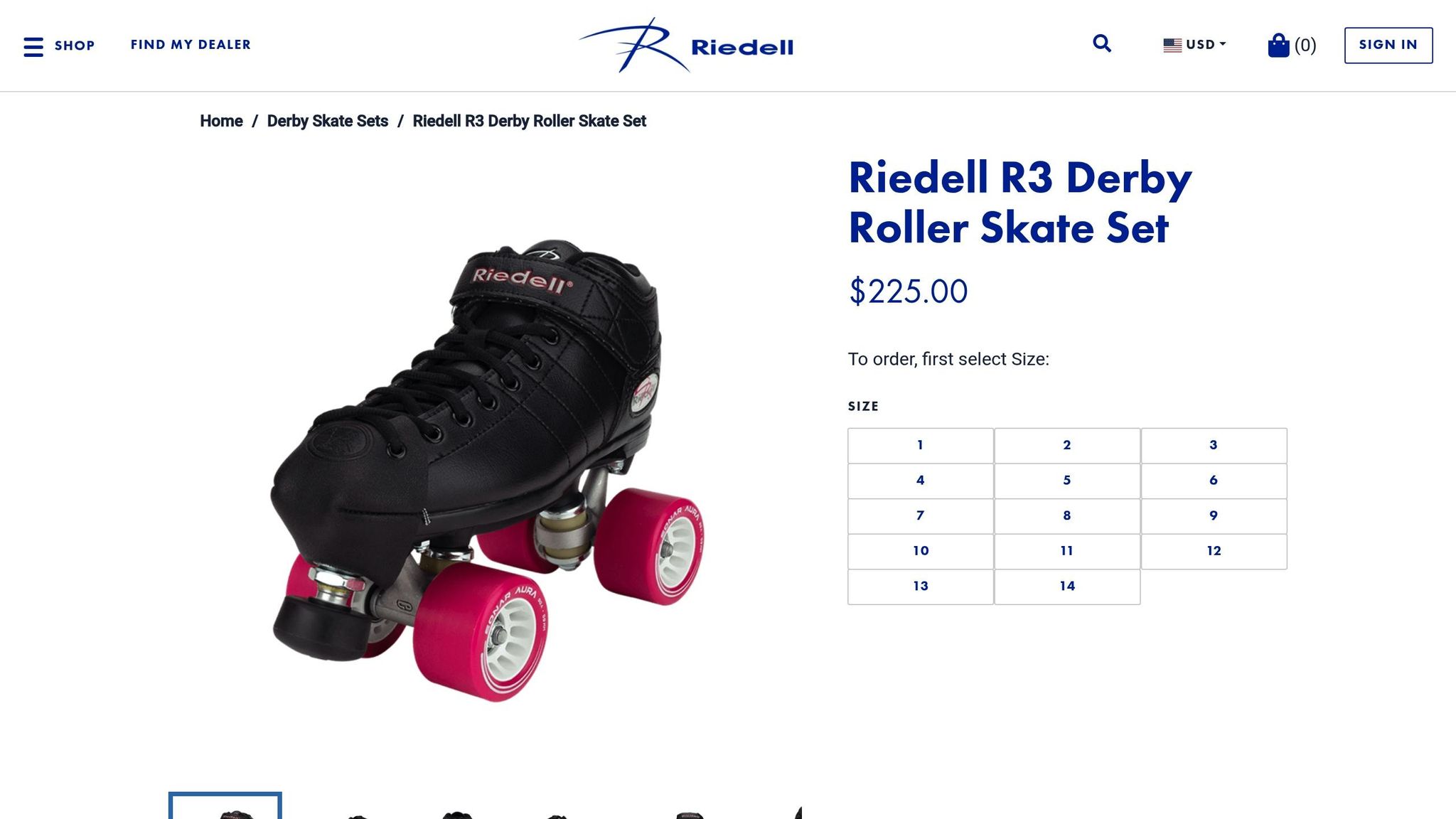
Riedell R3 Derby, prissatt till $175.00, är ett populärt val för inomhusåkning. Den har en lågskuren vinylsko med vadderat stöd, vilket ger en sneakerslik känsla för komfort hela dagen. De 62mm 95A Radar Cayman hjulen och ABEC 5 lager säkerställer en jämn prestanda på inomhusytor. Om du söker något mer specifikt finns en utomhusversion för $179.00 och ett derbyfokuserat alternativ för $199.00.
Moxi Beach Bunny
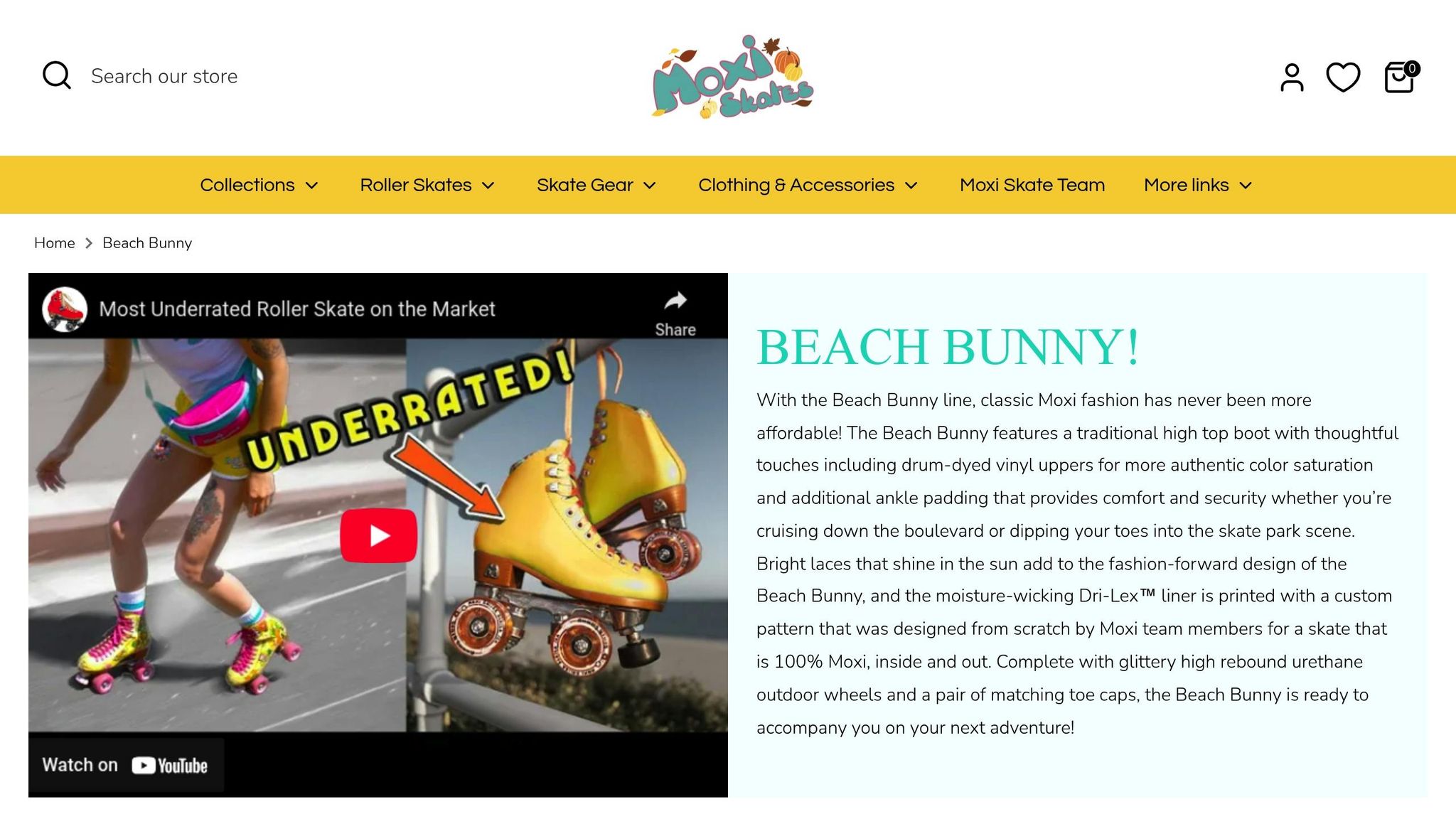
För friluftsälskare är Moxi Beach Bunny ett fantastiskt val för $119.00. Designad för rekreationsåkning, kommer den med trumfärgade vinylskor som inkluderar fukttransporterande Dri-Lex-foder och extra vaddering runt ankeln för ökad komfort. De 58mm 78A hjulen, tillsammans med en PowerDyne Marvel aluminiumplatta och justerbar tåstopp, ger det grepp och stabilitet du behöver på olika utomhusunderlag. Dessutom är den en favorit bland åkare för sin livfulla stil och pålitliga konstruktion.
VNLA Parfait
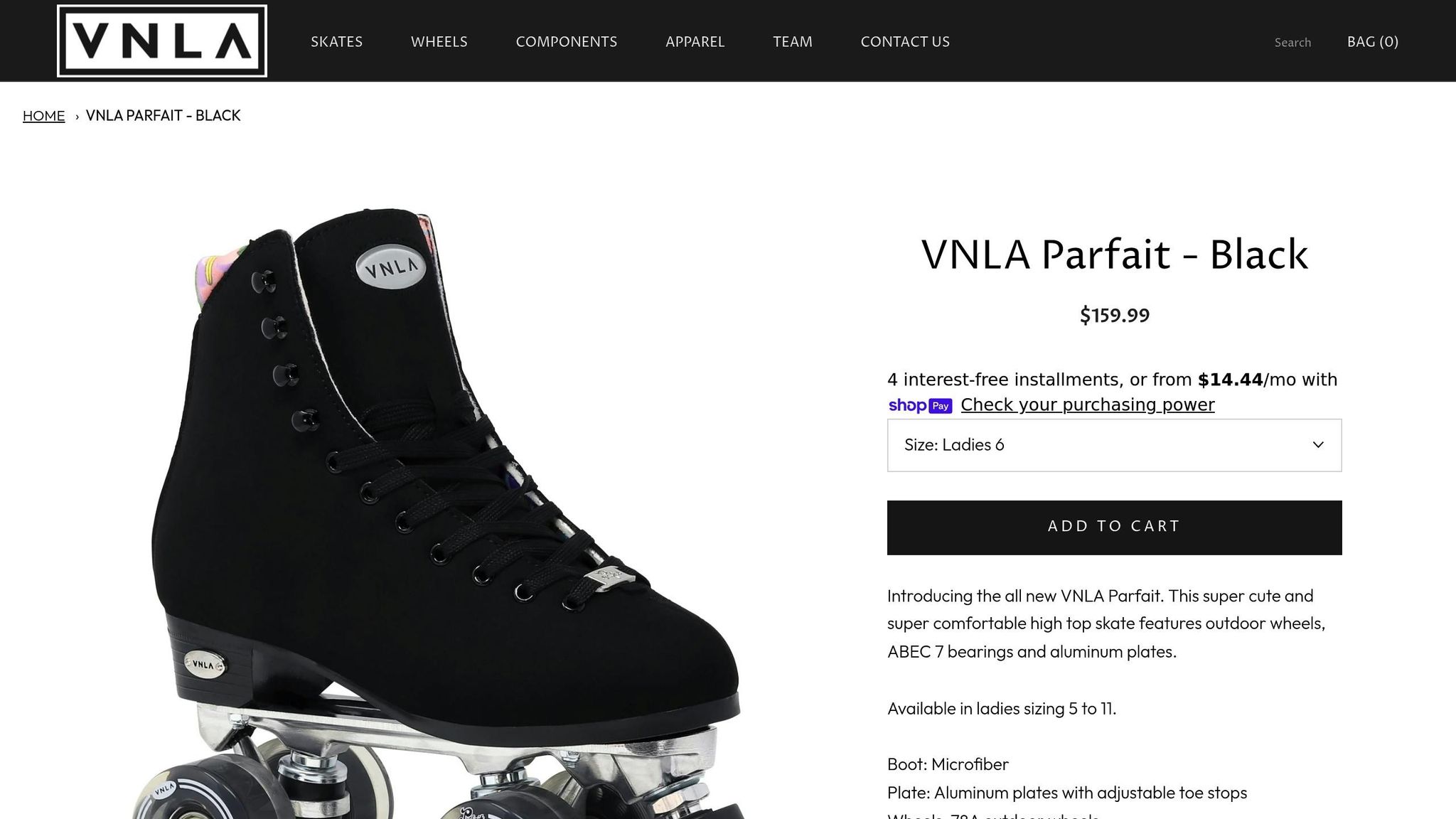
Om du letar efter en lätt skate med bra stöd kan VNLA Parfait vara din match. Priset är $159.99 och den kombinerar en mjuk men stadig sko med mjuka innersulor, vilket gör den bekväm för långa träningspass. Den är särskilt anpassad för breda fötter, men de medföljande formgjutna sulorna ger en tajt passform även för smalare storlekar. Med 58mm 78A hjul och ABEC 7 lager är denna skate tillräckligt mångsidig för både spår och skateparker.
| Skatemodell | Pris | Bäst för | Hjulstorlek/hårdhet | Nyckelfördel |
|---|---|---|---|---|
| Riedell R3 Derby | $175.00 | Inomhusåkning, derbystart | 62mm 95A | Bekväm passform med stabil prestanda |
| Moxi Beach Bunny | $119.00 | Utomhusrekreationsåkning | 58mm 78A | Bra grepp och stabilitet utomhus |
| VNLA Parfait | $159.99 | Långa övningspass | 58mm 78A | Lättviktiga och bredfotade |
Oavsett dina skridskomål finns det en modell här som passar dina behov. Oavsett om du övar inomhus, åker utomhus eller tar dig an skateparker, är dessa skridskor byggda för att stödja din resa. Och medan dessa traditionella alternativ är pålitliga, fortsätter Snowfeet att sticka ut med sin innovativa inställning till nybörjaråkning. Nästa steg är att dyka in i snabbstartstekniker som hjälper dig att komma igång med självförtroende.
sbb-itb-17ade95
Snabbstartstekniker för att lära sig åka skridskor
Med lite övning och rätt inställning kan du snart börja åka skridskor med självförtroende. Dessa snabba tips hjälper dig att bygga en stabil grund så att du kan glida smidigt och njuta av åkturen. Låt oss gå igenom det steg för steg.
Hitta rätt hållning och balans
Att få rätt hållning är första steget för att känna sig stadig och självsäker på skridskor. Börja med Ready Position: stå med fötterna axelbrett isär, och linjera axlar, höfter och fotvalv i en rak linje från huvud till häl. Böj knän och vrister lätt, luta skenbenen framåt över tårna och håll armarna i midjehöjd där du kan se dem i din perifera syn.
Innan du ger dig ut på asfalten, öva denna hållning på en stabil yta som matta eller gräs. När du är på skridskor, försök att glida medan du håller denna position - lås inte knäna och luta dig inte för långt framåt. För extra stabilitet, prova A-Frame Stance: håll dina skridskor parallella men bredare än axelbrett, så att benen bildar formen av ett stort "A". Håll alltid knäna lätt böjda för att undvika att falla bakåt.
Grundläggande rörelser: Starta, glida och stanna
När du väl har fått till din hållning är det dags att börja röra på dig. Om du använder quad skates har du tur - de är nybörjarvänliga och har en tåbroms för enkel inbromsning. Börja öva på mjuka underlag som gräs eller matta. Det hjälper dig inte bara att vänja dig vid skridskorna utan dämpar också eventuella tidiga fall.
När du glider, fokusera på små, stadiga rörelser. Skjut försiktigt ifrån med en fot medan du håller vikten balanserad på den andra. Håll dina rörelser långsamma och kontrollerade. För att stanna, tryck försiktigt ner tån på en skridsko samtidigt som du håller vikten centrerad - denna metod är enkel och effektiv. Om dina skridskor känns för snabba eller ostadiga, dra åt hjulen för att få bättre kontroll.
När du har fått kläm på att glida och stanna är det dags att lära dig nästa viktiga färdighet: att falla säkert.
Att falla och resa sig säkert
Att falla är en del av inlärningsprocessen, så det är viktigt att veta hur man gör det säkert. Bär alltid skyddsutrustning - knäskydd, armbågsskydd och hjälm - för att minska risken för skador. Börja öva i en mjuk, kontrollerad miljö tills du känner dig mer säker.
Om du ramlar, skynda dig inte att resa dig upp. Ta en stund för att kontrollera att du mår bra. Använd närliggande stöd, som en vägg, bänk eller till och med en vän, för att hjälpa dig återfå balansen när du ställer dig upp. Med tid och övning blir du bättre på att hantera fall och resa dig utan att missa ett slag.
Skyddsutrustning för nybörjare
Att bära rätt skyddsutrustning handlar inte bara om att vara säker - det ökar också ditt självförtroende. När du vet att du är skyddad kan du fokusera på att lära dig och ha roligt utan att oroa dig för varje fall. Med rätt utrustning känner du dig tryggare och redo att ta dig an nya skridskoutmaningar.
Måste-ha-utrustning
Om du precis har börjat finns det tre utrustningsdelar du absolut behöver: handledsskydd, knäskydd och en hjälm. Dessa grundläggande skyddar de områden som mest sannolikt tar emot en smäll när du lär dig.
- Handledsskydd: Dessa har plastskenor som hjälper till att absorbera stötar och förhindra handledsskador. Eftersom din första instinkt vid ett fall är att ta emot dig med händerna, är handledsskydd ett måste.
- Knäskydd: Knäna är en av de mest utsatta delarna när du åker skridskor. Leta efter skydd som täcker inte bara knäskålen utan också sträcker sig ovanför och under den för bättre stötdämpning.
- Hjälmar: Huvudskydd är icke förhandlingsbart. Även ett litet fall kan leda till allvarliga huvudskador. Välj en multisporthjälm som är speciellt designad för skridskoåkningspåverkan - cykelhjälmar räcker inte.
Hur man väljer och anpassar skyddsutrustning
Att ha rätt utrustning är steg ett; att se till att den passar ordentligt är lika viktigt. Så här gör du för att få det rätt:
- Hjälmar: Använd ett mjukt måttband (eller en bit snöre) för att mäta runt ditt huvud, placera det ungefär två fingerbredder ovanför dina ögonbryn och 1–2 tum ovanför öronen. Passformen ska vara tajt men inte för hård. När hjälmen är på ska den sitta jämnt på huvudet med framkanten precis ovanför ögonbrynen - inte mer än en tum högre. Justera remmarna så att de bildar en "Y"-form under öronen för en säker passform.
- Skydd och vaddering: Oavsett om du handlar i butik eller online, se till att kolla tillverkarens storleksguide. Utrustningen ska sitta tajt utan att stoppa blodcirkulationen. Tänk på att vaddering tenderar att töjas ut med tiden, så om du ligger mellan storlekar måste du bestämma dig: välj mindre för en tajt passform som formar sig över tid eller större för omedelbar komfort som kan bli för lös senare.
När du provar knäskydd, handledsskydd eller annan utrustning, se till att de sitter kvar när du rör dig. Knäskydd ska täcka knäskålen helt, och handledsskydd ska sträcka sig från handflatan flera centimeter upp på underarmen. Du ska kunna böja och röra dig fritt utan att utrustningen glider.
Kvalitet spelar roll
Snåla inte på skyddsutrustningen. Högkvalitativ utrustning håller inte bara längre utan ger också bättre skydd och en bekvämare passform. Det är en investering som lönar sig när du går från nybörjare till en mer självsäker skridskoåkare. Med utrustning som sitter perfekt kan du fokusera på att förbättra dina färdigheter och njuta av åkturen.
Slutsats: Starta din skridskorese idag
Att börja din rullskridskoäventyr behöver inte kännas överväldigande eller ta evigheter att lära sig. Med rätt par skridskor – som R3 Derby, Moxi Beach Bunny eller VNLA Parfait – får du den stabilitet och komfort du behöver för att känna dig säker direkt. Dessa skridskor är speciellt designade för att hjälpa nybörjare att hitta balansen och njuta av åkturen från dag ett.
Quadskridskor är ett utmärkt val för nybörjare. Deras bredare hjulbas och lägre tyngdpunkt gör dem lättare att kontrollera, vilket är perfekt för att bygga upp dina färdigheter.
Skyddsutrustning är ett måste – det handlar inte bara om skydd utan också om att känna sig tryggare. Se till att du är utrustad med hjälm, knäskydd och handledsskydd innan du ger dig ut på asfalten.
För att komma igång, fokusera på grunderna: en stabil hållning, mjuk glidning och att lära dig att falla säkert. Öva på en lugn, öppen plats som en tom parkeringsplats eller din uppfart. Utan distraktioner eller hinder kan du koncentrera dig på att bemästra dessa grundläggande tekniker. När du har fått kläm på dem är du väl på väg mot en rolig och givande skridskounderupplevelse.
Rullskridskoåkning är inte bara roligt – det är också ett fantastiskt sätt att hålla sig aktiv och spendera kvalitetstid med familj och vänner. Med rätt utrustning och lite övning kommer du bli förvånad över hur snabbt du kan gå från ostadiga första steg till att glida med självförtroende.
Och om du är nyfiken på att prova något nytt, erbjuder Snowfeet* en fräsch twist. Genom att kombinera designelement från skidor och snowboard ger de extra stabilitet och enkelhet för nybörjare. Detta unika tillvägagångssätt har gjort skridskoåkning mer tillgängligt och mindre skrämmande för många nykomlingar.
Så, snöra på dig skridskorna och ta det första åket. Varje proffsskridskoåkare började precis där du är nu. Med dagens nybörjarvänliga utrustning och pålitligt skydd är du redan redo för framgång. Låt äventyret börja! 😊
Vanliga frågor
Varför är quad-skridskor bättre för nybörjare än inline-skridskor?
Quad-skridskor är ett stabilt val för nybörjare tack vare sin design som prioriterar stabilitet och balans. Med två hjul fram och två bak ger den bredare hjuluppställningen dig en stadig bas, vilket gör det lättare att hålla balansen – även när du bara står stilla. Denna extra stabilitet kan göra att det känns mindre skrämmande att lära sig åka skridskor.
Dessutom är quad-skridskor lättare att kontrollera när det gäller hastighet och svängar, vilket kan göra hela upplevelsen mycket mindre frustrerande för nybörjare. Om du är ny på skridskoåkning erbjuder quad-skridskor ett bekvämt och självförtroendehöjande sätt att komma igång!
Hur kan jag avgöra om mina rullskridskor passar ordentligt för komfort och stöd?
För att få perfekt passform på dina rullskridskor, fokusera på både komfort och stöd. Välj skridskor med höga stövlar, eftersom de ger bra stabilitet för ankeln och dämpning. Dina skridskor ska kännas tajta, men inte för trånga – inga klämmande eller tryckande punkter tillåtna.
När du provar dem, kontrollera att tårna har lite rörelseutrymme och att hälarna sitter stadigt utan att glida. Om du precis börjat, leta efter nybörjarvänliga funktioner som vadderade foder och justerbara snören eller remmar. Dessa kan hjälpa dig att få en säker, personlig passform, vilket gör det lättare att bygga självförtroende och behålla kontrollen när du lär dig.
Vilken skyddsutrustning behöver nybörjare för rullskridskoåkning, och hur kan den hjälpa?
För dig som precis börjat med rullskridskoåkning är skyddsutrustning ett måste för att hålla dig skyddad och stärka ditt självförtroende. Högst upp på listan står en hjälm för att skydda huvudet, tillsammans med handledsskydd, knäskydd och armbågsskydd för att skydda dig vid oundvikliga fall. Nyckeln är att se till att all utrustning sitter tajt och håller sig på plats medan du åker.
Att bära rätt skyddsutrustning minskar inte bara risken för skador – det hjälper dig också att känna dig tryggare när du övar. Att välja kvalitetsutrustning kan göra din inlärningsupplevelse både säkrare och roligare, vilket ger dig friheten att fokusera på att förbättra dina färdigheter.







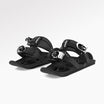













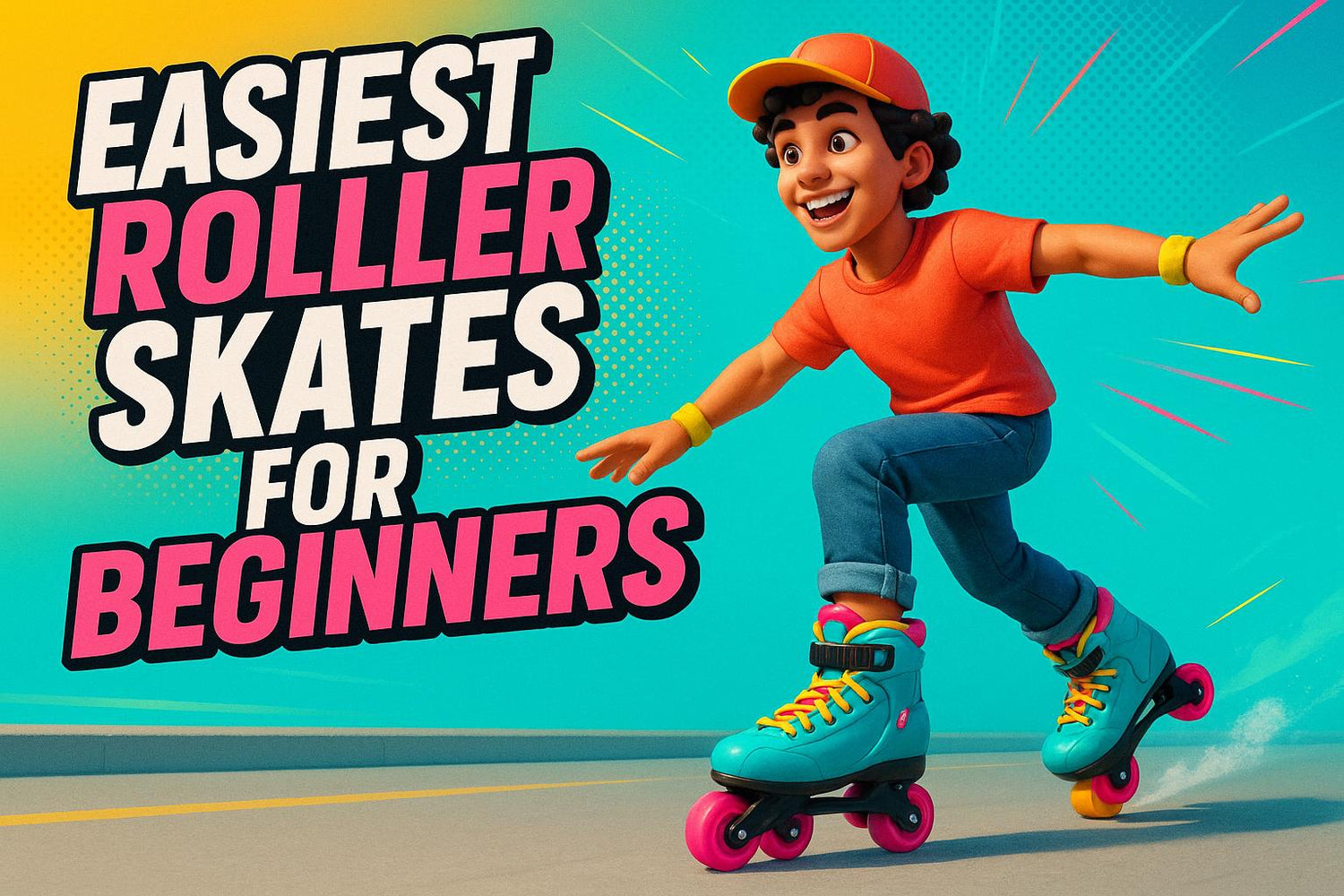
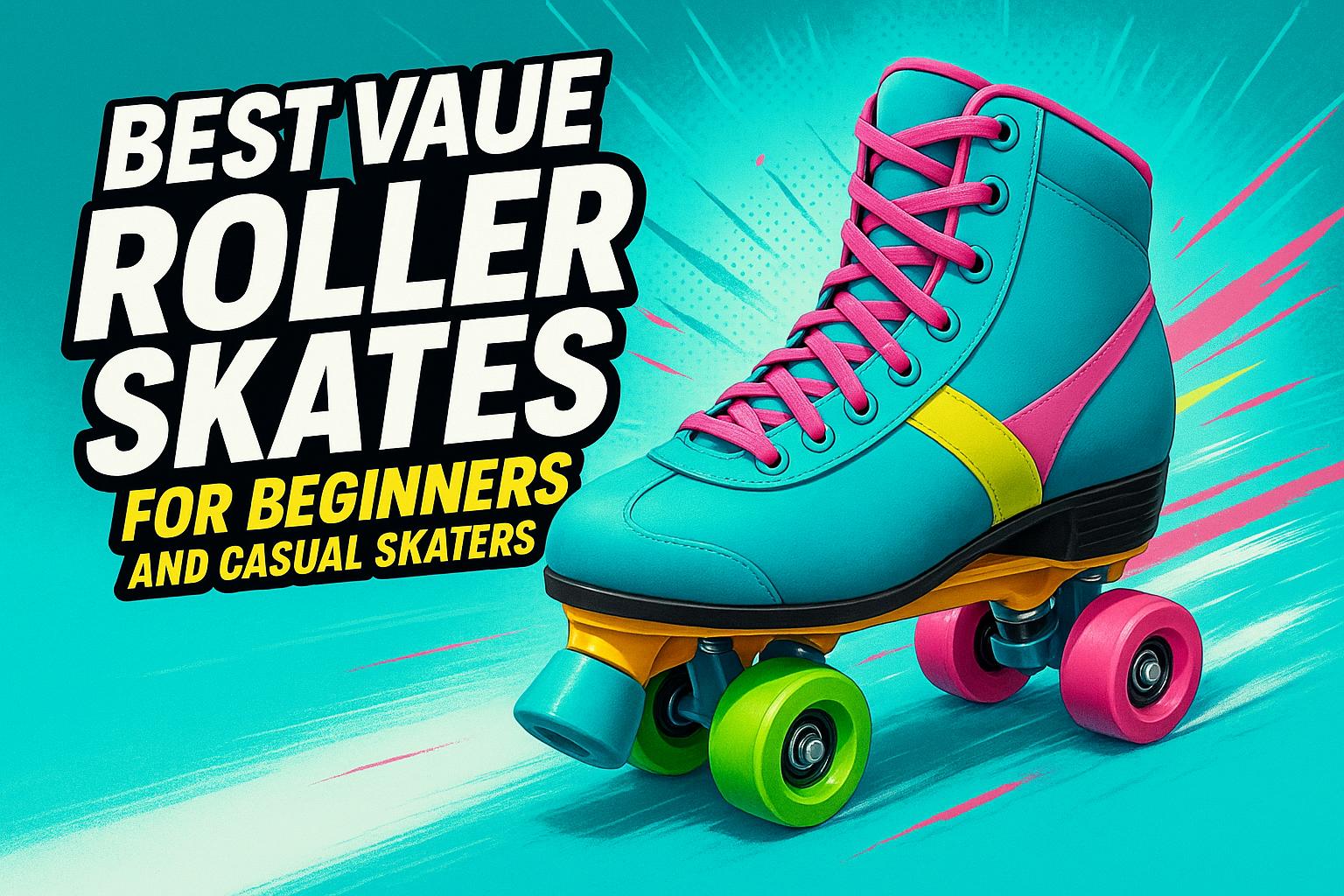
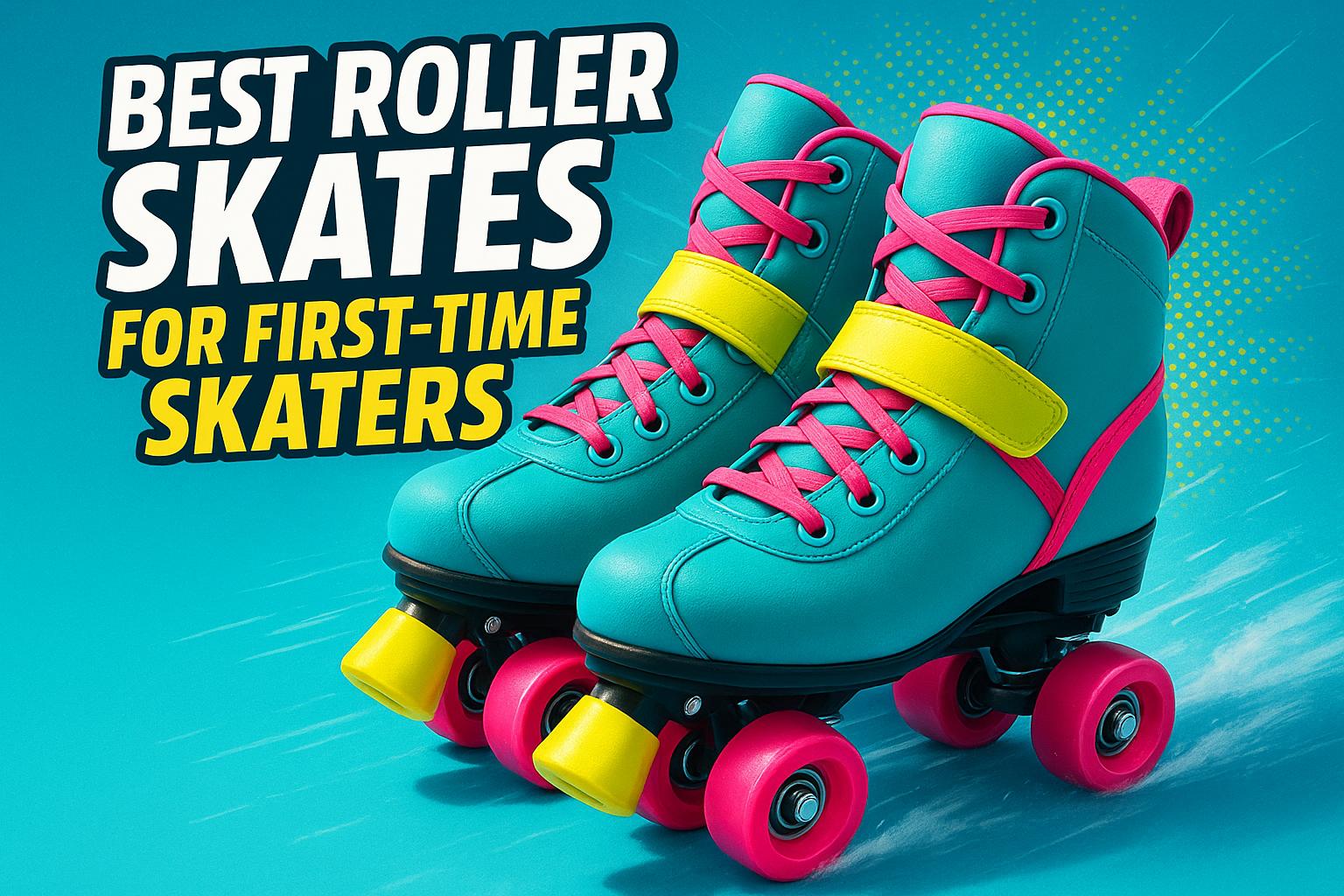




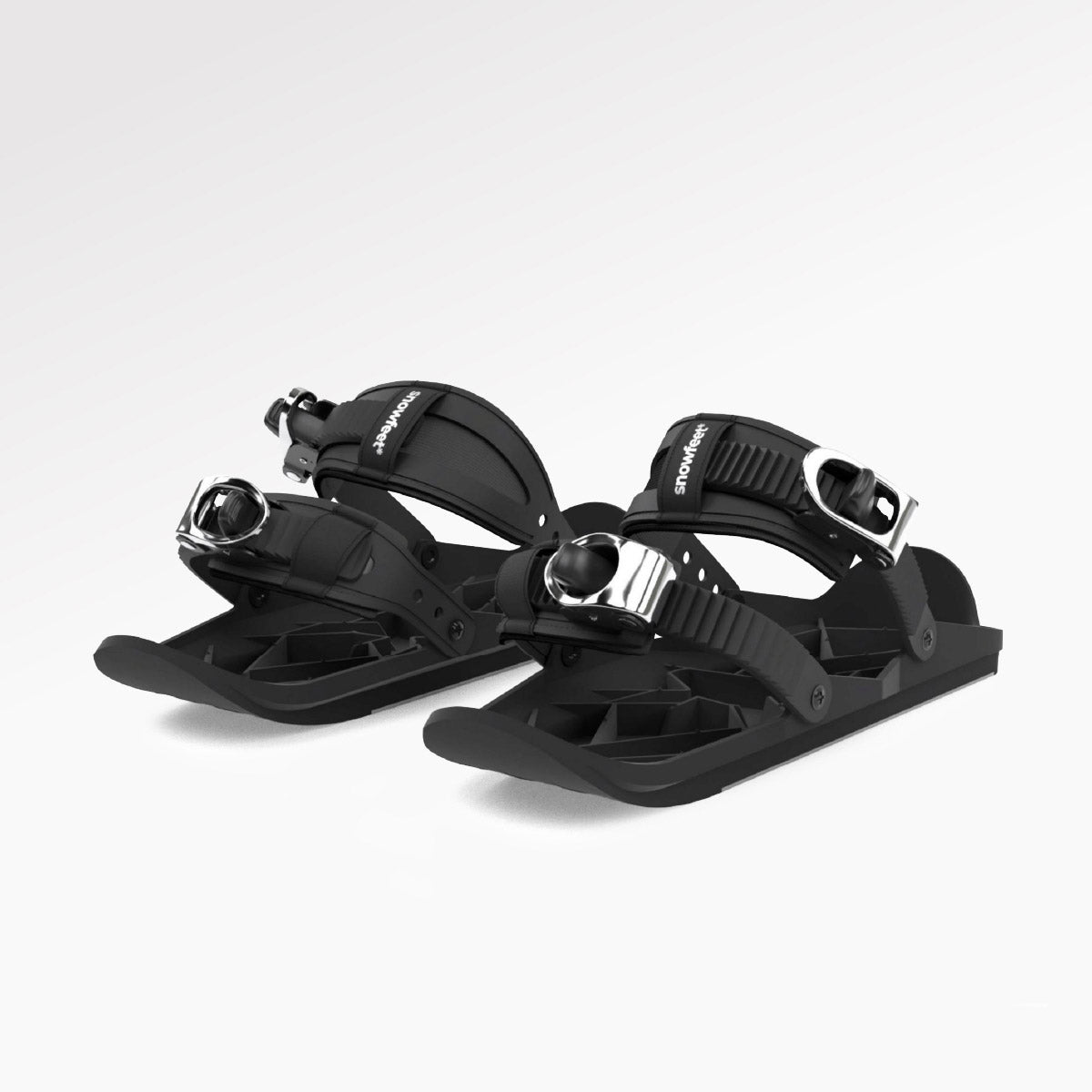
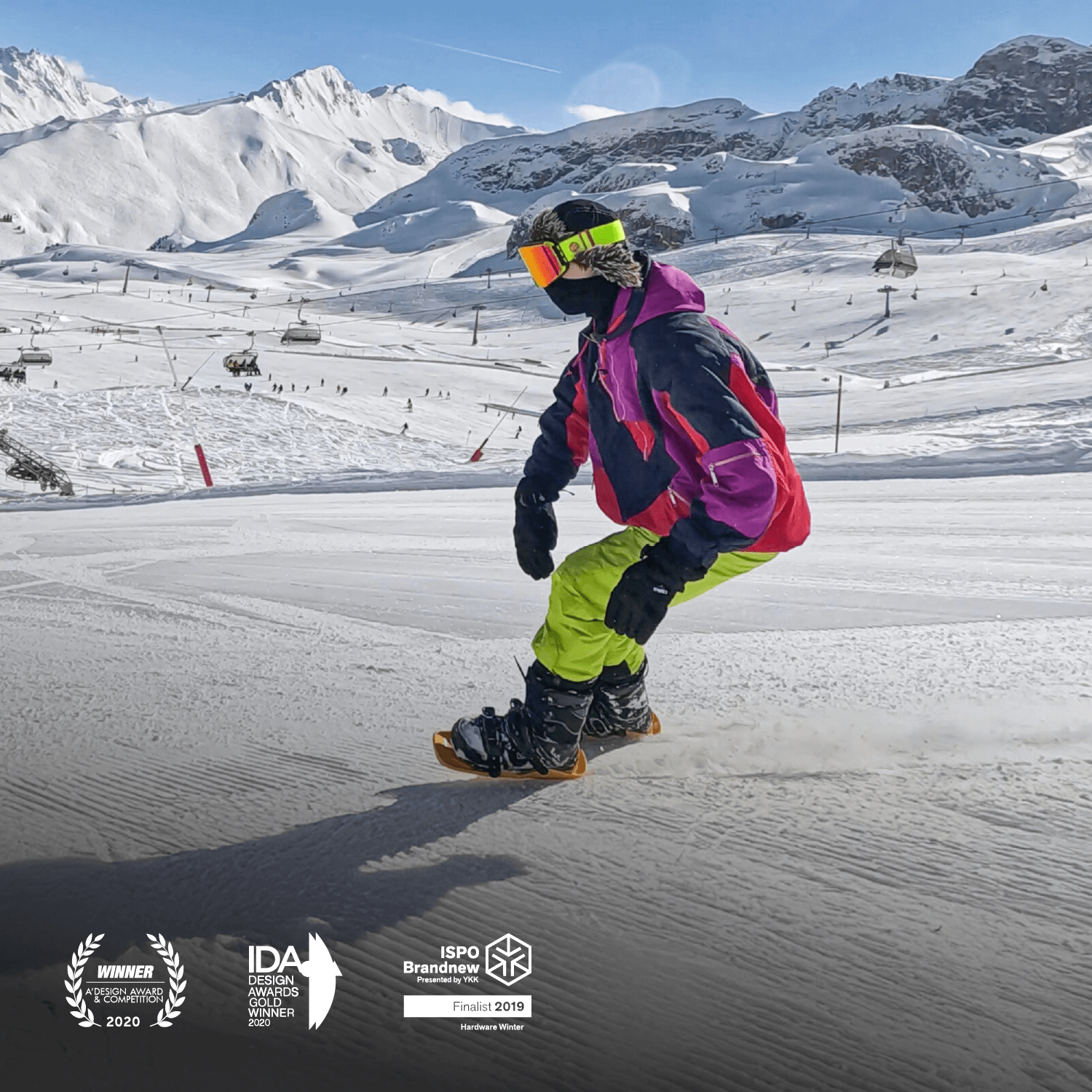




Lämna en kommentar
Denna webbplats är skyddad av hCaptcha och hCaptchas integritetspolicy . Användarvillkor gäller.